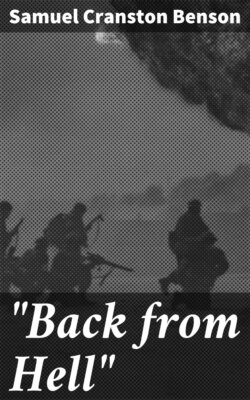Читать книгу "Back from Hell" - Samuel Cranston Benson - Страница 6
На сайте Литреса книга снята с продажи.
CHAPTER IV A UNIT IN ITS INFANCY
ОглавлениеTable of Contents
The story of the American Ambulance Service has been written by abler pens than mine and so I will give but a brief account of it.
When the war first began the idea of serving France through ambulance work was conceived by a few large-visioned Americans. The plant of the fine new boys' school called the "Lycée Pasteur" was turned over to these men for the ambulance headquarters. The beginnings had been small, Henry Ford having donated in 1914 ten ambulances with which the movement started. Early in the next year, however, the American Ambulance institution became attached to the French forces which were in active service. The work of the preceding months was quite essential in its way, as its errors no doubt pointed out the path to the later efficiency, and a larger number of ambulances were being accumulated from week to week. The first donation of machines made it possible for the organization at the very beginning to participate in the transport work, and the ever increasing number of cars necessitated the forming of squads in the endeavor to broaden the scope of the service.
There were at first five ambulances in each squad and these were loaned to the French forces, but because the squads were so small they were used by the French to supplement the regular government sections which were already in action behind the lines. Their chief work was that of hospital evacuation, which it was soon perceived could be performed more advantageously by the heavier ambulances of the sections which had been working at these hospitals before. But in the early spring a change was made in the organization of the American service and a new man was given charge. Through his influence the French officials gave the American Ambulance Service a trial on the firing line. A section was dispatched to the Vosges which soon gained the recognition of its commanders, who requested that it be doubled in size. When this request was complied with, the section moved to the front in Alsace, in connection with a similar French section. Very soon after another section of the same size was organized and sent to Pont-à-Mousson, connected also, as the former one had been, with a French section. During this time also a squad had been stationed at Dunkirk in northern France.
The American Field Service was at last a reality. These three sections now began to make history and demonstrated considerable usefulness to the cause. The Americans in Alsace took over the dressing station on the battle line, and soon found themselves caring for an entire region, which became famous for its baptism of fire.
The section at Pont-à-Mousson has an enviable record. When it first went to Pont-à-Mousson the French service which was already stationed there was amalgamated with it. Later on this section made the mountain dressing stations possible, which heretofore had been quite impossible. The section at Dunkirk had been engaged in caring for the wounded from air raids and from bombardments by the Germans almost twenty miles away. This section was now honored by being doubled again and given work to do at several important points along the battle line, and with the French army in Belgium.
All the sections now became of acknowledged value and in a remarkably short period their practical possibilities were recognized. Wherever possible the French sections were speedily removed and the whole work given over to the American units. No car could have been chosen for ambulance service which was better fitted for it than the Ford. The mud is the greatest problem around Dunkirk, but it was no barrier to the Ford. The large supply trucks at Pont-à-Mousson were outstripped by the Fords, and the slow and somewhat clumsy mules in Alsace were superseded by them. The drivers were largely college men from Yale, Harvard, Princeton, Columbia, and other universities, who put great action and inspiration into the service. Later on the section from Dunkirk was sent up to the Aisne. The section at Pont-à-Mousson went to Verdun, and that in Alsace was sent over to Pont-à-Mousson. Several other sections were also organized and played a most important part in transporting the wounded of the Allies.
AMERICAN AMBULANCE HEADQUARTERS,
NEUILLY, FRANCE.
This magnificent building was its first home.
AMBULANCES READY TO LEAVE FOR THE FRONT.
From the very first day of mobilization it had been a terrible problem for the French, who needed every last man to fight the enemy, to spare enough to care for those who were wounded in the fighting. This is most important work, as it means the getting of the wounded men into shape as quickly as possible, so they can be put into the fighting line again. The world knows that from the first the man power of the French Republic has been strained to its capacity and the French welcomed with joy the aid which the Americans offered in this direction. It released many of their own men and furnished many cars which otherwise they would have had to supply themselves, diverting them from the most vital points. The taxicab army which Paris sent out in the first days of the war was not equipped for ambulance work, and so from that time on, for almost three years, the men and ambulances from America were utilized and welcomed with enthusiasm.
The French will never forget and certainly the Americans will remember with pride the assistance they were able to render in the days when the liberty and existence of the nation hung by a pathetically slender thread.
